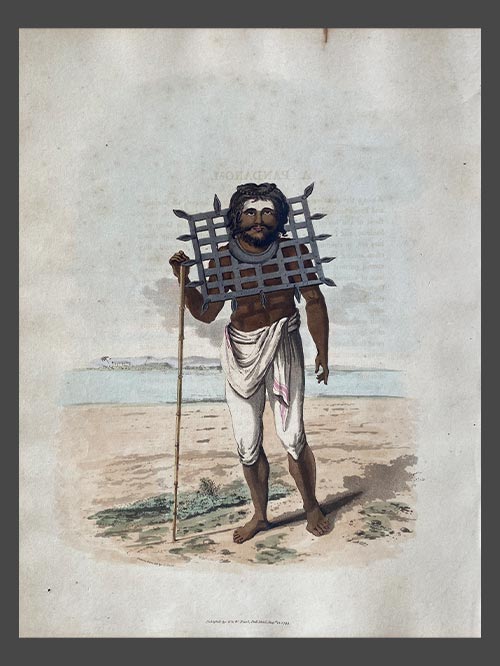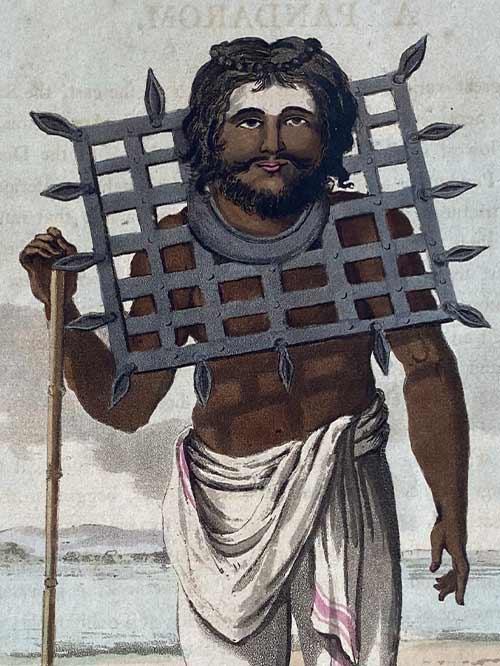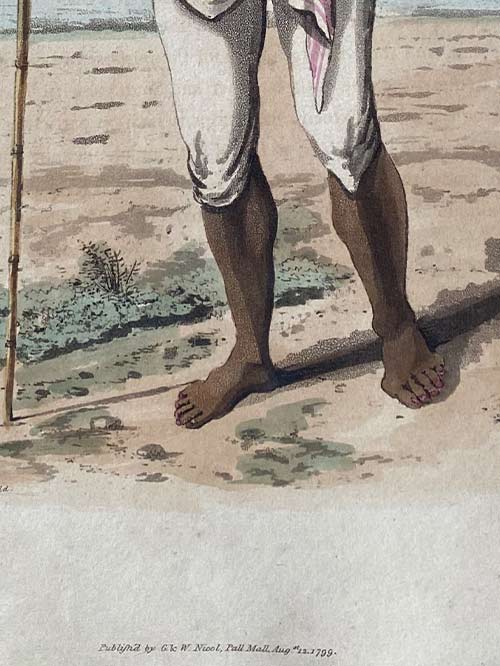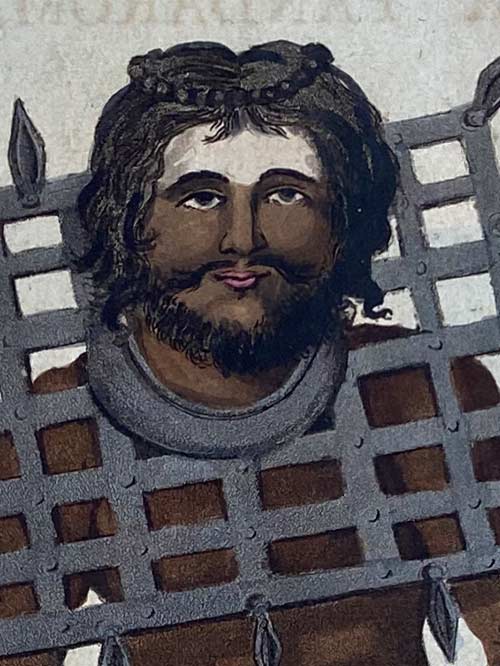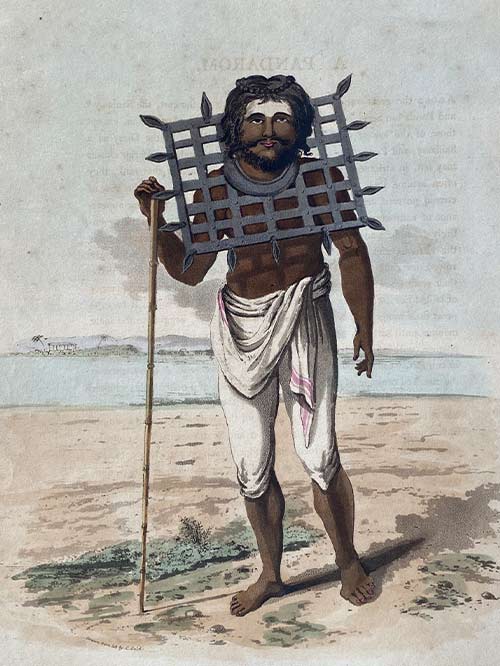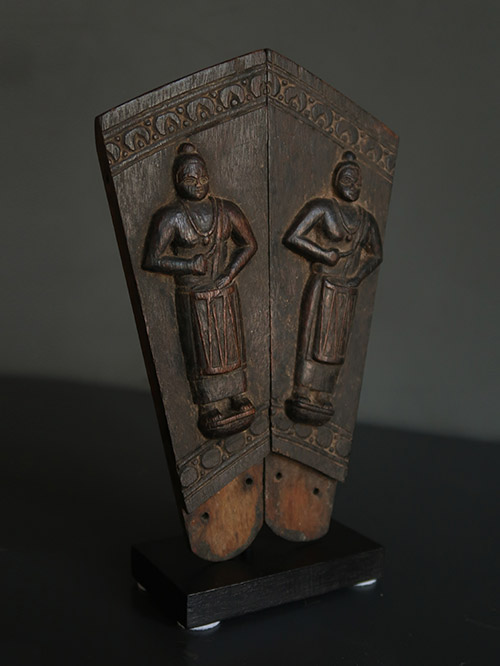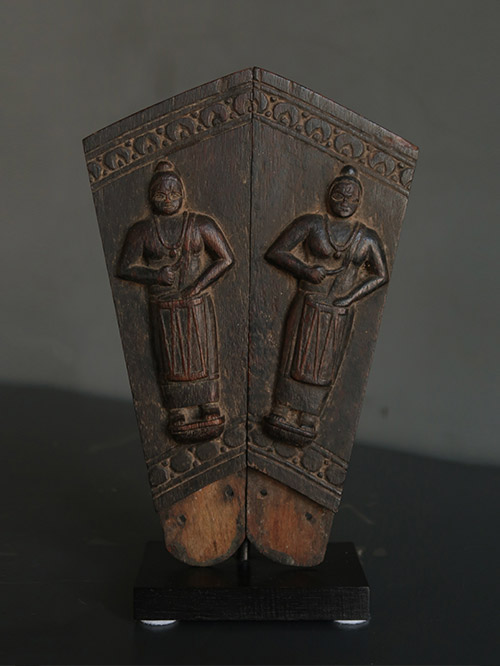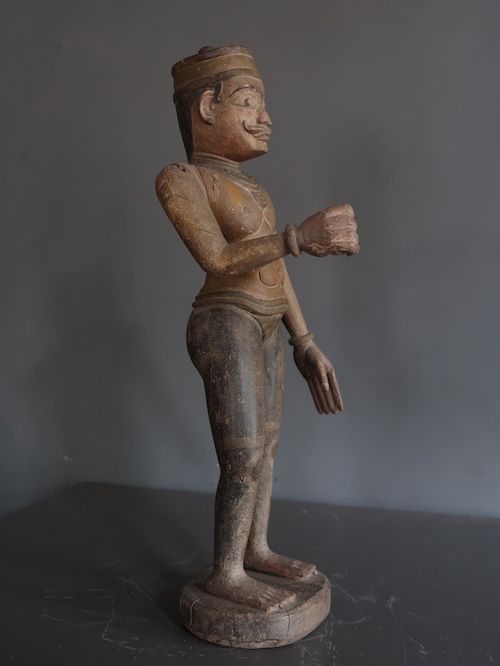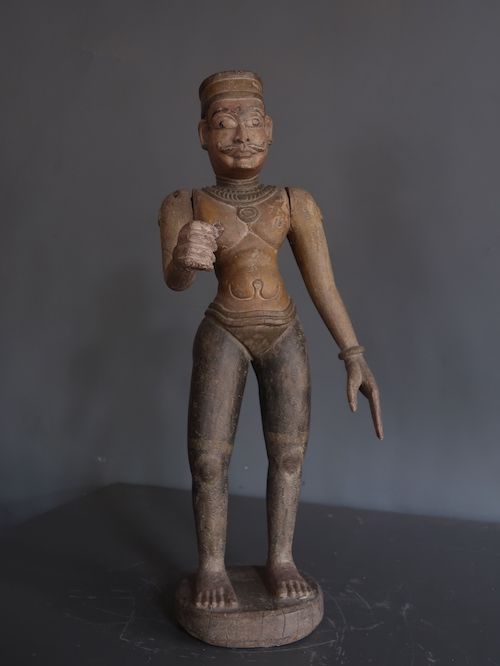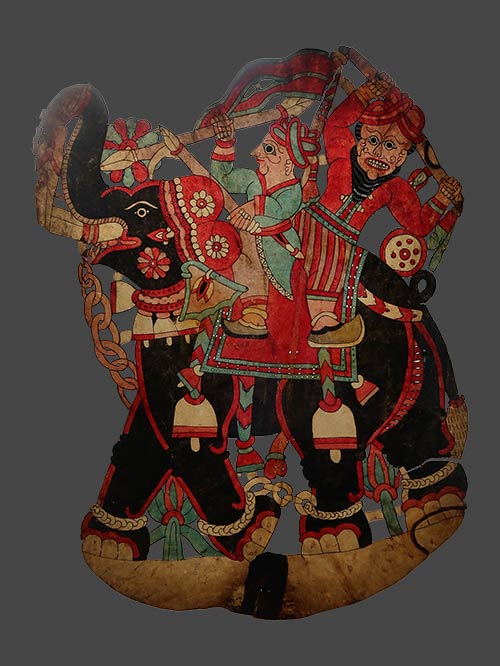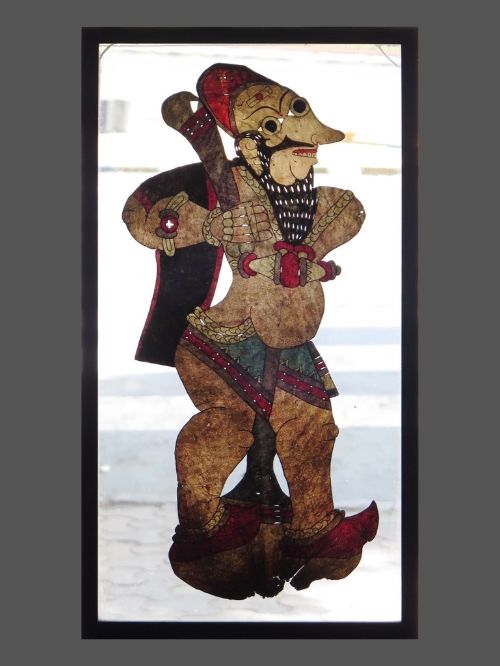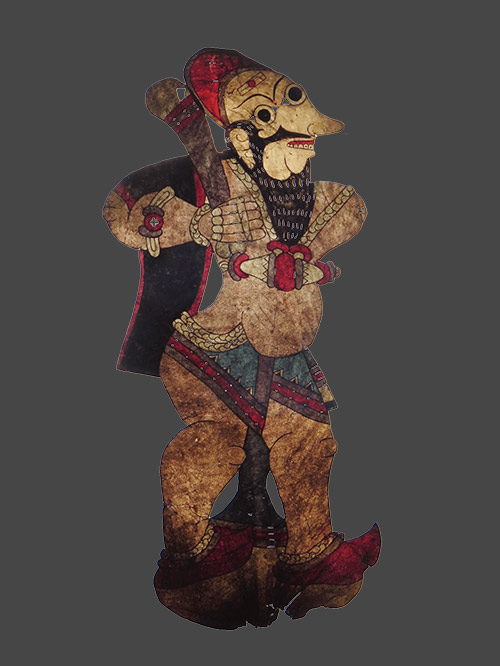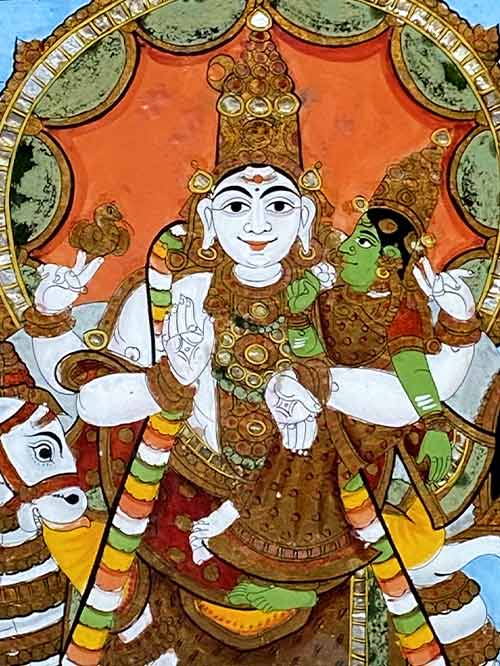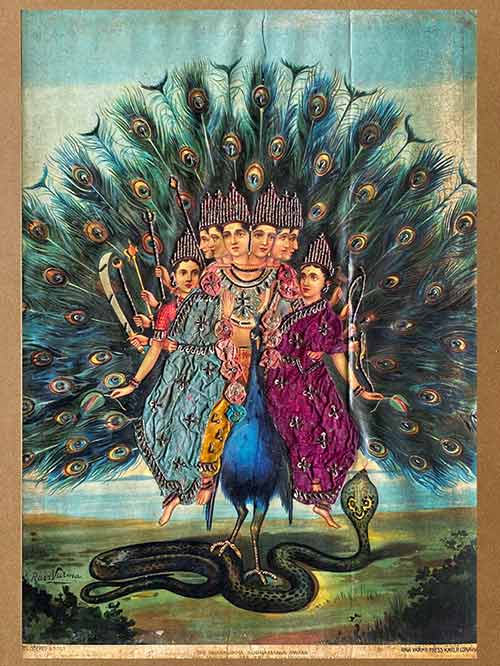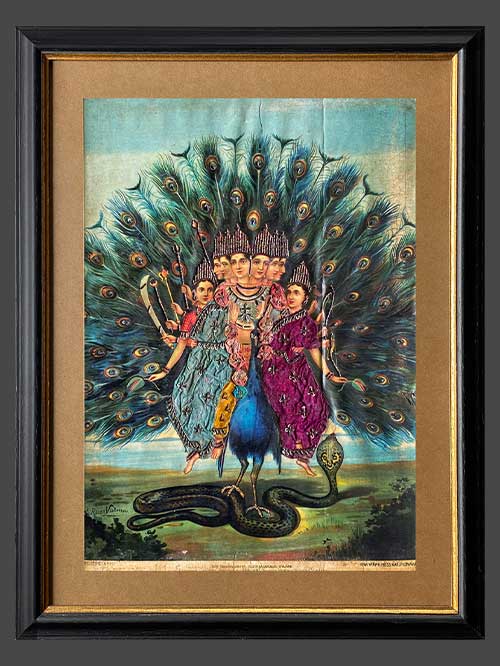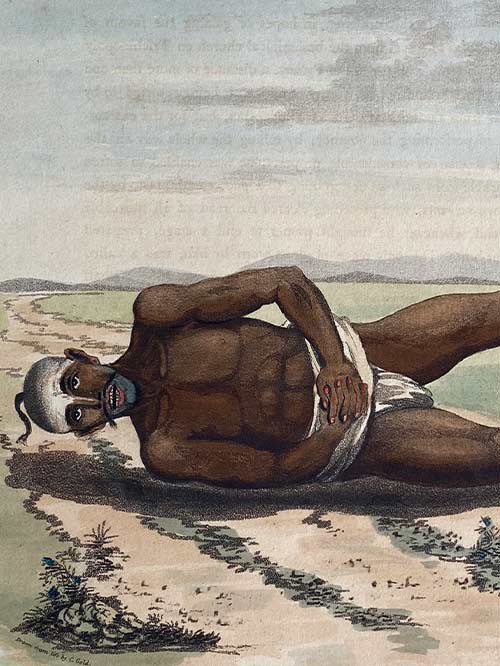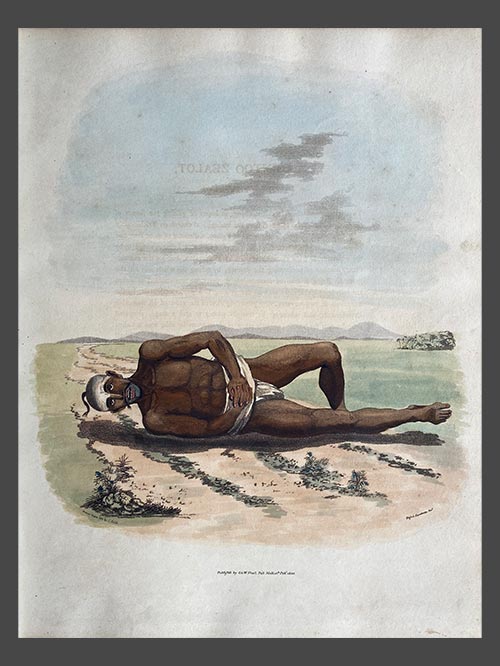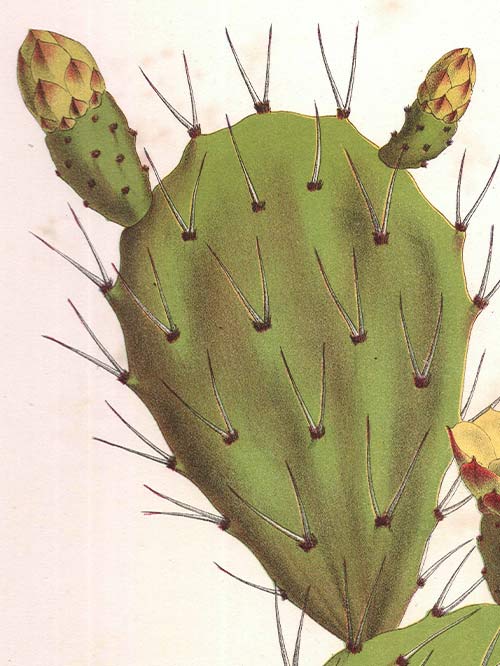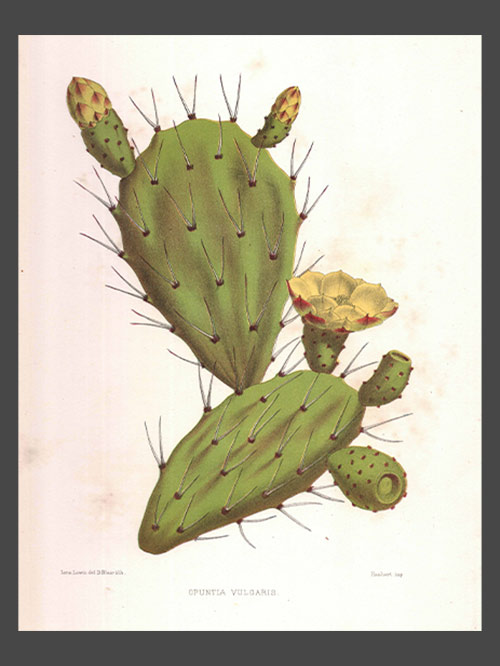Pub. London
original hand-coloured aquatint
Captain Charles Gold (d. 1842) served in the military campaigns against Tipu Sultan, the ruler of the Kingdom of Mysore and during 1791-98 he sketched a series of images later published as aquatints in “Oriental Drawings.” He was fascinated with the concept of religious begging and documented all manners of mendicants and zealots that he met on his travel, often detailing their unique trials and tribulations.While these prints cannot be divorced from the orientalist roots from which they came, they are a compelling visual memoir of a time and people that may have otherwise been lost to time.
The artist describes his interaction with the mendicant he drew “from life at Trichinopoly; whither he had travelled to attend a grand festival at the celebrated Pagoda on the isle of Seringham. The grate he wore was encompassed by sixteen small lamps, which on particular occasions he caused to be illuminated. He usually wore his grate in an horizontal position, as it then rested on his shoulders with more ease. His forehead was whitened with cow-dung ashes, and his head ornamented with a circular string of the nuts of Rouderin. Among the great variety of religious enthusiasts in the east, the Saniassy and Pandarom Sects are held in the highest veneration. Under the vow of eternal poverty, temperance, and chastity, these people, with every appearance of contentment, lead a wandering and precarious existence, being entirely dependent on alms. There are instances of some, who have vowed never more to speak, others form a resolution to continue in an upright posture, without ever lying down; and to prevent the possibility of sleeping in comfort, wear an iron grate, closely rivetted on the neck,” as represented in this hand-coloured aquatint.
Size (cms): 33(H) x 25(W)
Size (inches): 13(H) x 10(W)

